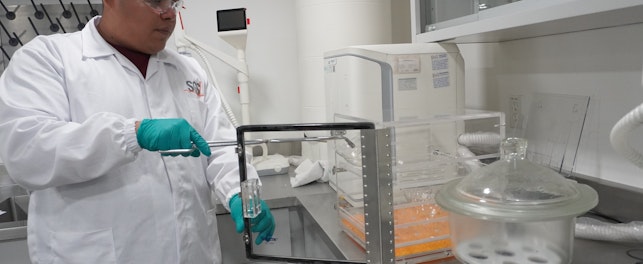In early September 2020, fire crews were called to a specialist recycling business in Somerset, England, to put out a fire started by a dead lithium-ion (Li-on) battery.1 This is just one of many instances of fires being caused by waste batteries. We look at the correct ways to dispose of batteries when they are dead.
Batteries are everywhere. They are an increasing part of the way we live our daily lives. From cars and watches, to laptops and smartphones, batteries are an important part of the technology we rely on.
The batteries in this technology are often Li-on. These provide greater power; however, this comes with one significant disadvantage – greater risk. Older nickel and alkaline batteries gave considerably less power, but they were also safer. Unlike those older battery types, Li-on batteries require safety circuitry to render them safe.
The Risks
There is always a risk associated with any battery. Old batteries can explode, leak, release harmful gases or, as we have seen, catch fire. While the battery may be small, no bigger than a coin, its impact can be enormous. In one example, a pig ate a pedometer and excreted the battery, which then caused a 75-square meter fire.4Batteries have been known to catch fire in a variety of unusual circumstances – for example, waiting in an office or during the middle of a flight.5 In these instances, the batteries were not discarded and were nominally being supervised. The effects, however, could have been severe.
Those same risks still apply when the battery has reached the end of its useful life, the major difference is they are no longer being supervised and they may be kept in conditions that exacerbate the potential for harm. One report relating to electric vehicles states that, while a ‘dead’ Li-on battery may no longer power a car, it will still retain around 80% of its charge.6 This means there is a great potential for fire, explosion or leakage if a battery is not disposed of correctly.
Safe Battery Disposal
In the past, how people disposed of batteries was not considered an important issue. When an AA or AAA battery died, they would simply put it into the household trash. This garbage was then transported to a centralized site for disposal. The procedure would involve heavy equipment, such as bulldozers, changes in temperature, and other processes that could damage the battery. This method of disposal was considered acceptable because environmental considerations were not at the forefront of many people’s minds, and the number and power of the batteries involved was far less.Today, we are seeing greater quantities of discarded batteries and they are often the higher power Li-on type. The quantity of batteries in the waste system significantly increases the chances of a battery being damaged. Even the smallest piercing of the protective layers of a Lithium-ion battery can cause a failure.7
It is therefore important for all batteries to be disposed of in the correct way. This involves finding a battery deposit site, where the correct safety measures can be enforced. This might be a local electronics store or recycling center.
It should also not be forgotten that in some places, like New York City, it is illegal to throw electrical items into the waste. Disposing of waste batteries correctly is therefore not only a safety issue, but also a legal issue.8
Recycling does not just make sense in environmental terms; it also makes sense financially. One study found that the materials in an electronic vehicle battery cost around USD 1,200 but they have a market value of between USD 10,000 and USD 15,000. There is therefore considerable value in recycling the components. It should also be said that, with the battery still having around 80% of its charging ability, there is also value in continuing to use the battery in a different context.9
SGS Solutions
SGS has over 20 years experience of testing batteries. Utilizing a global network of state-of-the-art laboratories, we have the right capabilities in place to help manufacturers develop safe and reliable batteries that conform to the complex regulations governing today’s competitive markets. Our comprehensive range of services include tests covering abuse, durability, electromagnetic compatibility (EMC), performance, safety standards and transportation. In addition, we can look at environmental impact and conduct full life cycle analysis.
Learn more about SGS Battery Testing Services.
Rodney Grimes
Senior Battery Supervisor
SGS Consumer and Retail Services
t: +1 770 570 1800
References
1 Batteries nightmare
2Consortium to investigate battery waste fires
3 Characterisation of fires caused by batteries in WEEE
4 Pigs start 75 square metre fire after swallowing and excreting battery powered pedometer
5 Man takes off trousers at airport after electronic device catches fire
6 The drive to recycle lithium-ion batteries
7&8 Lithium batteries are more dangerous than you think
9 The drive to recycle lithium-ion batteries



